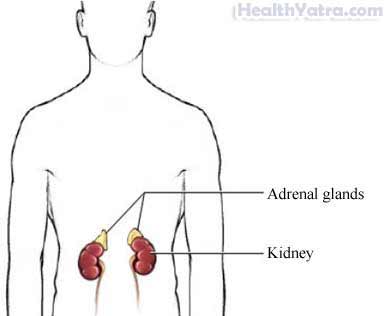Definition
Hirsutism is excess male-pattern hair growth in women. The coarse, dark hair can occur in areas such as the face, chest, and back.
Causes
True hirsutism is often due to an increased level of a male sex hormone called androgen. The main circulating androgen is called testosterone. This hormone is normally found in both men and women. There are certain medical conditions or medications that may cause an elevation in the levels of this hormone in women.
The most common cause of hirsutism is polycystic ovary syndrome. Other less common include:
- Congenital adrenal hyperplasia
- Some forms of Cushing syndrome
- Adrenal tumors
- Ovarian tumors
- Pituitary tumors
- Certain drugs, including:
- Minoxidil
- Cyclosporine
- Phenytoin
- Anabolic steroids
- Diazoxide
- Progestin-containing medications (such as oral contraceptives)
Sometimes excess hair growth is due to the person’s ethnic background or family tendencies. In some cases, the cause is not known.
Risk Factors
There are no known risk factors for hirsutism.
Symptoms
Symptoms and signs of some disorders associated with hirsutism may include:
- Excess hair growth (on the face, arms, back, armpits, groin, or chest)
- Abnormal or absent menstrual periods
- Male-pattern baldness
- Deepened voice
- Increased size of clitoris
- High blood pressure
- Enlarged ovaries
- Enlarged adrenal glands
- Abnormal cholesterol levels and glucose intolerance

Diagnosis
The doctor will ask about your symptoms and medical history. A physical exam will be done. Tests may include:
- Blood tests—to measure the amounts of certain hormones
- Stimulation or suppression tests—to measure how hormone levels in the blood respond to changes
- Ultrasound—a test that uses sound waves to examine the inside of the body
- CT scan—a type of x-ray that uses a computer to make pictures of the inside of the body
- MRI scan—a test that uses magnetic waves to make pictures of the inside of the body
Treatment
Treatment is directed at the underlying cause of the hirsutism and may include:
Medications
Medications that may help include:
- Spironolactone
- Finasteride (Proscar, Propecia)
- Flutamide
- Oral contraceptives
- Metformin (Glucophage)
- Eflornithine (Vaniqa)
Hair Removal
Methods of removing hair include:
- Shaving
- Bleaching
- Chemical treatment (depilatories)
- Waxing
- Electrolysis
- Laser treatment
- Intense pulsed light (IPL)—uses high-intensity pulses of light to remove hair; unlike laser treatment, IPL uses a range of wavelengths.
Treatment of Other Conditions
If you are diagnosed with a condition that may be causing hirsutism, proper treatment may resolve the hirsutism. Weight loss may also play a role in reducing underlying hormone imbalances.
Prevention
Hirsutism may be prevented by treating the underlying cause.
